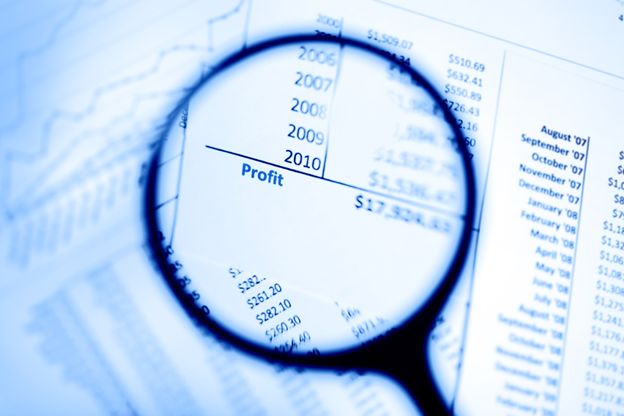What is underlying profit?
In accounting, underlying profit refers to measuring the actual profit recognised by a company used for planning business processes. The company internally calculates the underlying profit to reveal a more accurate measurement of the more revenue generated from its regular business operations. It may be used for business process planning instead of the operating profit reported for regulatory or accounting purpose. This way of calculating profit concentrates on usual accounting cycle events, apart from one-time events or uncommon situations.
Summary
- Underlying profit can be defined as the measure of the actual profit identified by a company used to plan business operations.
- Underlying profit gives an overview of the company's performance and income of the company that it has gained from regular business operations. Therefore, it helps investors to make investment decisions as well.
- Underlying profit is reported to GAAP by every company in their financial statements.
Frequently Asked Questions (FAQ)
How to calculate the underlying profit metrics?
Some companies believe that the underlying profit represents the profit earned by the company more accurately than the other traditional methods. Therefore, knowing the calculation of underlying profit is essential in such situations. The concept of underlying profit slightly differs from the traditional earnings or net income of a company. Let us first understand the calculation of underlying profit.
The calculation of underlying profit is said to be the one that opposes the calculation of statutory profit. Statutory profit refers to the profit earned by a company that needs to be reported in a company's financial statements. However, it excludes certain factors while calculating statutory profit.
For example, let us assume a situation in which the company decides to sell off one of its major assets- one of its manufacturing factories. The company management believes that the company would do well without it. The sale of this significant asset would be very beneficial for the company that it might be reported under its net income.

Image source: © Silverv | Megapixl.com
However, the income from the major asset sale would not be considered while calculating underlying profit as it excluded one-time gains. The one-time gains do not represent the money that is gained from regular business operations. Therefore, it can also be said that underlying profit does not include money gained from any unusual activity or an income that cannot be reported in fixed intervals.
On the other hand, it can also be said that the calculation of underlying profit also excludes the expenses that do not occur frequently or are not involved with regular business operations of a company, i.e., operating expenses.
How does the underlying profit work?
Every company must report its financials to Generally Accepted Accounting Principles (GAAP) and disclose the net profit earned by a company over a specific period. The net profit is calculated similarly as calculating income tax payable by subtracting the dollar cost from the revenue earned.
Often companies manipulate the data and offer an inaccurate report about their net income. In such a situation, underlying profit comes into play where it represents the money that the company has earned solely from its business operations. As a result, it offers way more accuracy when reporting net profit earned by a company over a specific period.
Underlying profits strike-off unusual gains and non-recurring income, such as money from selling off an asset, natural disaster damage control money, etc. It makes it easier for investors to understand the overview of the company's performance and judge it easily.
The main objective of underlying profit is to eliminate any distraction that takes place due to unavoidable circumstances. Buying and selling of assets or properties do not take place regularly, and therefore, it is not supposed to cause an impact on the day-to-day business operations.
The operating expenses are the regular expenses that are considered while calculating underlying profit, where the expenses are deducted from gross sales to obtain the underlying profit. The operating expenses include:
- Personal expenses such as salaries of the employees and training costs often come under the umbrella of operating costs. Payroll is sometimes negotiable, and training cost is identified with prior experience.
- The cost involved with renting a property, mortgage, or logistics, and other utility costs such as mobile and internet bills also come under operating expenses.
- Technical expenses such as the cost involved with several softwares or electronic gadgets are also considered as operating expenses.
What are the pros and cons of underlying profit?
Underlying profit has both pros and cons. So let us first discuss the pros of the underlying profit.
- Underlying profit helps the investors to give an overview of the company's performance, and it is earning from regular business operations, which helps them to take investing-related decisions.
- Underlying profit is also beneficial for the company management as it helps them develop business plans and strategies for data-driven marketing. The business plans also help them cover unexpected expenses without hampering the earning gained through business operations.
- A business plan can be defined as a business road map that directs a company towards earning profit with the help of regular business activities.
- A company would like to remove the irregular or unusual business gain that might manipulate the total earning value of the company. Underlying profit in such cases would help the company rightly set the products' pricing to gain profit that covers all the operating expenses.
Image source: © Iqoncept | Megapixl.com
The following are the cons of underlying profit:
- The calculation of underlying profit is mainly seen as either faulty or inaccurate because companies first calculate the accounting profit, making certain adjustments to obtain the underlying profit. This is the reason why every company comes up with its own version of underlying profit.
- The investors can quickly figure out the difference between the underlying profit and the accounting profit and are well aware of the calculation of the underlying profit. However, most companies do not report an underlying profit in their income statements, and investors do not come to know about the company's actual earnings from its business activities.

 Please wait processing your request...
Please wait processing your request...